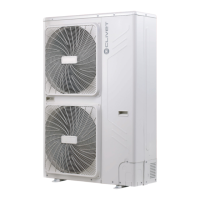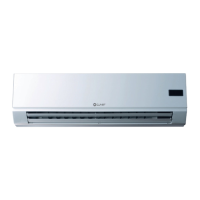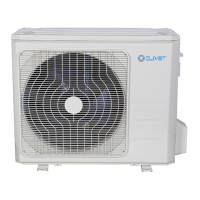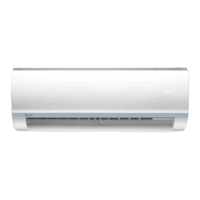29
Refrigerant piping
4.2 Thermal insulation of the pipes
Insulate the refrigerant and gas piping separately with
insulating polyethylene foam materials. Incorrect or
missing insulation causes condensation and subsequent
dripping.
For the connection parts of the indoor unit piping, use
heat-insulating materials that stick to the surfaces without
leaving gaps.
l
WARNING
Pipes laid in ceilings are particularly sensitive
to condensation.
The thickness of the insulating material must be at least
15/20mm and able to withstand heat of 120°C.
In conditions of high temperatures or humidity it is
necessary to increase the thickness of the material.
Size of the pipes Thickness
≤ Ø12.74 mm
≥15mm
≥ Ø15.9 mm
≥20mm
1
2
3
3
4 5
Fig. 38
1
Steel wire
2
Piping
3
Oily bituminous mastic or bitumen
4
Type A insulation material
5
Type B insulation material
Insulation
material
External piping Internal piping
A
Fibreglass and steel fibre
Adhesive, heat-resistant polyethylene
foam and adhesive tape
B Vinyl tape
Waterproof hemp
cloth, zinc plate and
oily paint
Do not insulate the electrical cables (6)
Fig. 39
Make sure that the pipe connections are completely
isolated from the indoor unit.
Fig. 40
If the pipe passes through a wall, take the following
precautions

